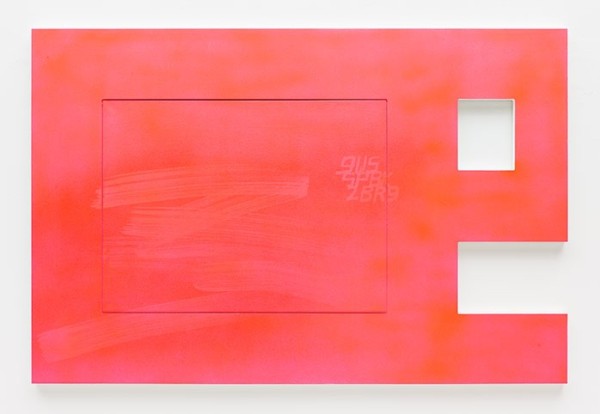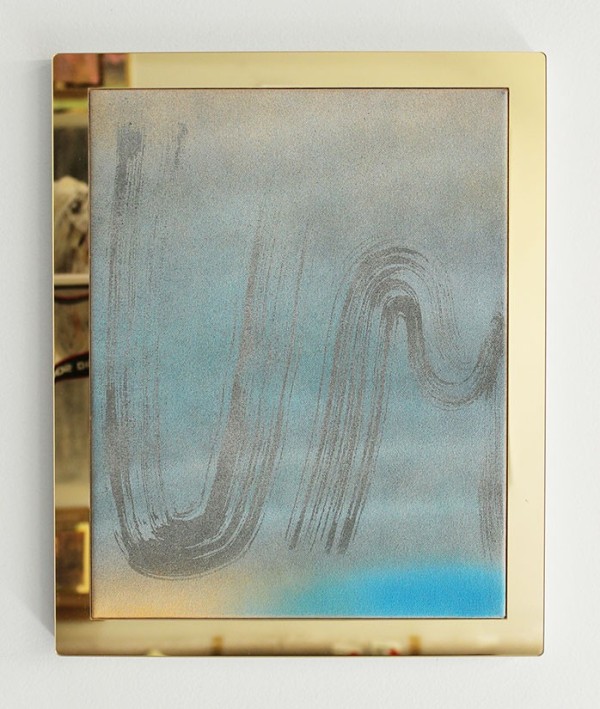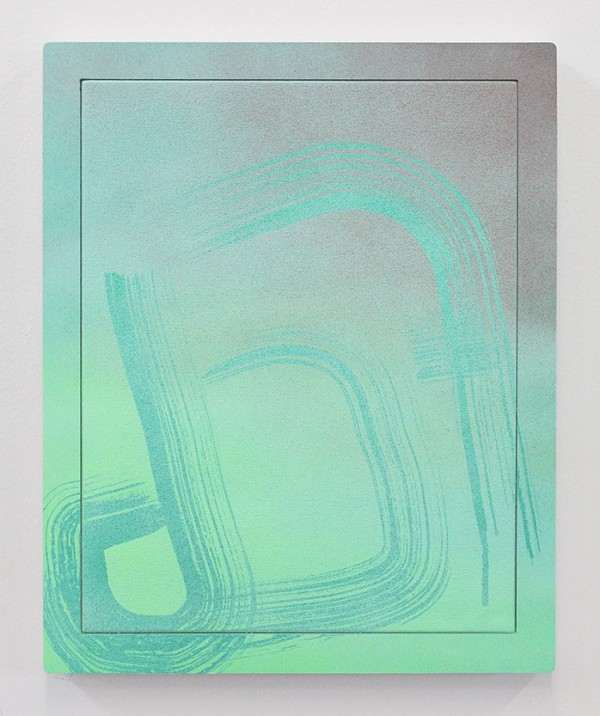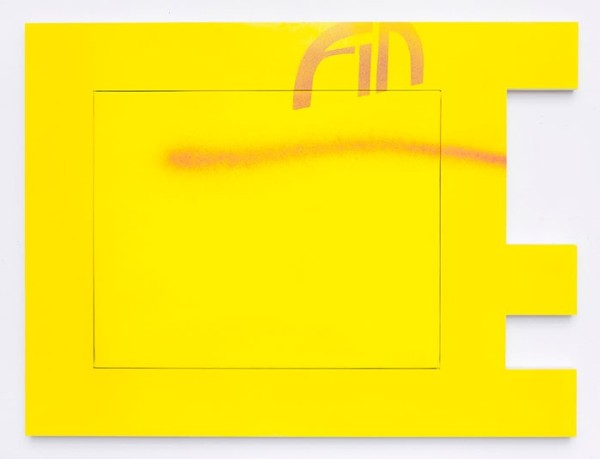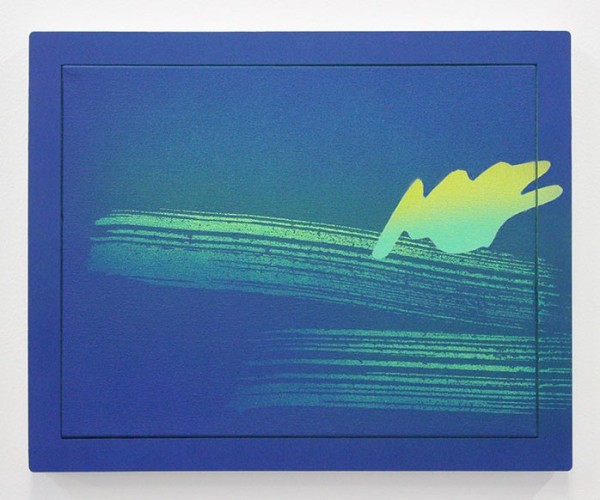Wendy White
Tuesday, 30 December 2014
Work from her oeuvre.
“At street level, New York is buried beneath a dense, dirty layer of signage and posters, graffiti and stickers, texts and other markings that represent every degree of legibility, legitimacy, and endurance. Heavily trafficked spots take on a life of their own as these elements trace a cycle of accumulation and decay, shouting over one another through the ambient noise. A resident of Manhattan’s Two Bridges (a downtown neighborhood adjacent to the Five Points mythologized in Gangs of New York), Wendy White is exposed to this war of words on a daily basis, and it exercises a continuing influence over her work. “There’s something profound about the relationship between architecture and disembodied marks,” she reflects. “It’s haunting—like a previous tenant.”
Initially a sculptor, by the mid-‘90s, White had moved toward painting. Yet she never neglected the third dimension, and has gone from exhibiting objects alongside her pictures to making the panels themselves more object-like. Increasingly, they also have a “modular” quality, like flat-pack furniture. (“It feels more modern,” she has said, “if things can be broken down and moved.”) White has also incorporated both studio-made and externally fabricated components, again exploiting resources offered by the city. The results are slippery, hybrid creations in which the languages of painting, photography, printmaking, collage, and digital imaging—as well as writing—are fused with the solidity of real-world places and things.
In making her series Fotobilds—parts of which appeared in Pix Vää, the artist’s 2012 solo exhibition at New York’s Leo Koenig, Inc.—White digitally manipulated original photographs of metropolitan sites and then had them printed onto vinyl. She juxtaposed these with painted canvases to arrive at large-scale, multipaneled works in which structural components overlap one another or rest on the gallery floor. Stacked and abutted, these parts also act in concert with one another, even—or especially—when they reproduce the jarring mishmash of their referents. Fotobilds (the German title suggesting, to an English speaker, construction as well as picturing) comes closer than any single-medium work could to a physical, visual, and associative palimpsest of the city itself.
The real locations represented in Fotobilds are also referenced in their titles. El Rocko Lounge, 2012, for example, incorporates a washed-out mirror image of the eponymous bar printed sideways across its upper half, while 197 Madison, 2012, reproduces shots of burgers and sandwiches from a deli at that address, their colors sun-bleached to pale magenta and dirty yellow. The “accidental aesthetic” of the latter is something for which White feels affection, alluding as it does to a human project lost in part to entropy. She is more interested in change than in that which pretends to permanence, limiting the amount of time she spends on any given work in order to maintain an atmosphere of flickering transience. “When I set out to make ‘Fotobilds,’” she remembers, “I’d been poring over the NYC Municipal Archives, thinking about historical photographs versus Instagrams; amateur versus professional; how manipulation of photographs is de rigueur and no one really believes in images anymore. The Archives—real photos of real places and of people now long-dead—felt real to me in a way that painting alone didn’t anymore.”
In the works’ painted portions, gestural marks—airbrushed Twombly-esque scribbles and scrawls—are combined with fragments of “real” text: lettering that almost but never quite adds up to a complete and correct word or words. Initials, abbreviations, and individual letters and numbers drift across hazy fields of color. Other elements interrupt the conversation. In the series Text Constructions, certain letters seem on the verge of breaking free from the rest of the composition, abandoning the rectilinear plane to become dimensional forms in their own right. In Part, 2010, for example, the titular word perches atop a panel, extending from its edge like some sort of linguistic battlement.
White’s interest in language extends beyond her current location and period. While immersed in New York, she has her eye and ear on other sources too. “I thought a lot about Faulkner when I first started using text in my work,” she remarks, “because I’d lived in the South for many years and felt convinced that Northerners had historically underestimated the power and intelligence of the Southern vocal cadence and accent. I wanted to make paintings that were a little manipulative in how much was left unsaid or unwritten. Concrete Poetry as also an influence, at least as a general concept.”
As the latter citation suggests, White also manages to combine allusions to current and historical art with the casual beauty presented by her immediate surroundings. Alongside the aforementioned hints of Twombly, there are borrowings from domestic DIY. And while the gentle spirit of Belgian master Raoul de Keyser seems to haunt their delicate abstract sensibility, so too does the bold look of a children’s toy (see in particular the series 3-Stripes, with its sporty graphic borders). Robert Rauschenberg’s “combines” and “cardboards” and Ellsworth Kelly’s shaped panels are clear influences too.
Yet White’s work is more individual and instinctive than any such spelled-out heritage might suggest. And while maintaining her aesthetic focus, she clearly feels free to experiment by introducing new elements and allowing them to establish their own rhythms. Take, for instance, the series Shatter Ball, in which pale-hued canvases inscribed with the specters of letterforms (they look, characteristically, to have been produced using rough stencils made from lengths of tape) are studded with halved footballs and baseballs surrounded by the starburst patters of what looks like shattered glass—a jokey toy repurposed as sculptural-painterly punctuation.
At the time of writing, White’s next scheduled exhibition is a solo appearance at Maruani & Noirhomme in Brussels. The work for the show evolved, she explains, from a painting in Pix Vää that was inspired by a local building, and addresses “the intersection of Grand and Chrystie Streets—the architecture, the lay of the land, specific businesses, the park, the entrance to the D train.”
“I’m still figuring out the relationship between what happens in the studio,” she concludes, “and what happens on the street.”” – Michael Wilson for New American Paintings, April 2013.

